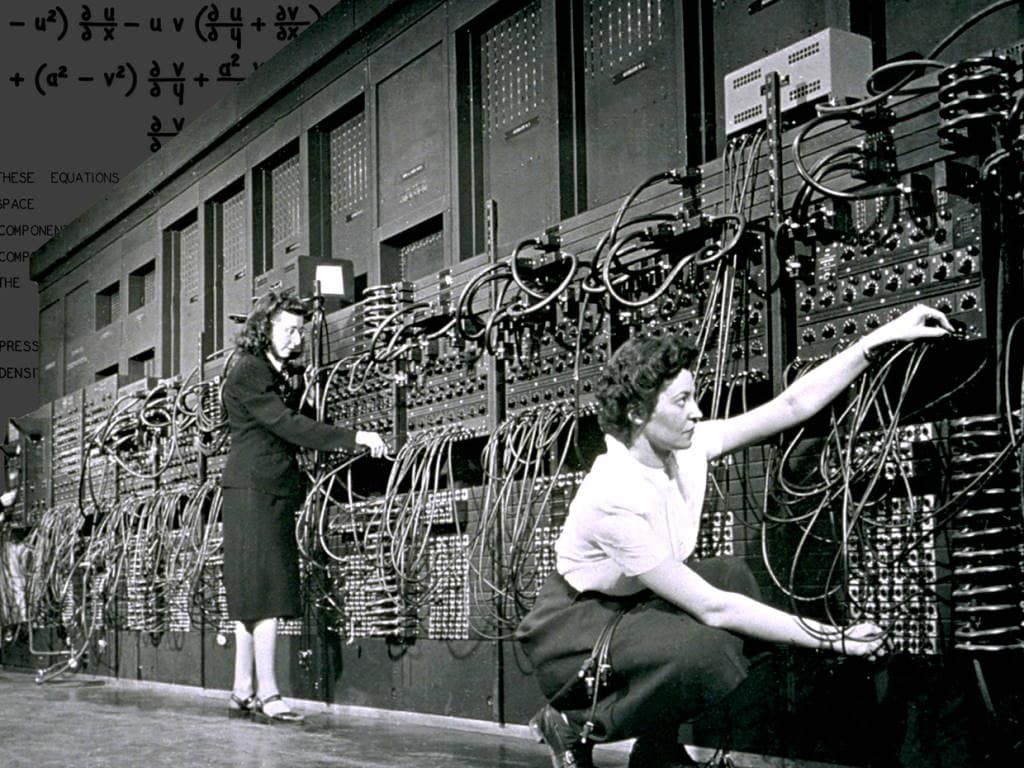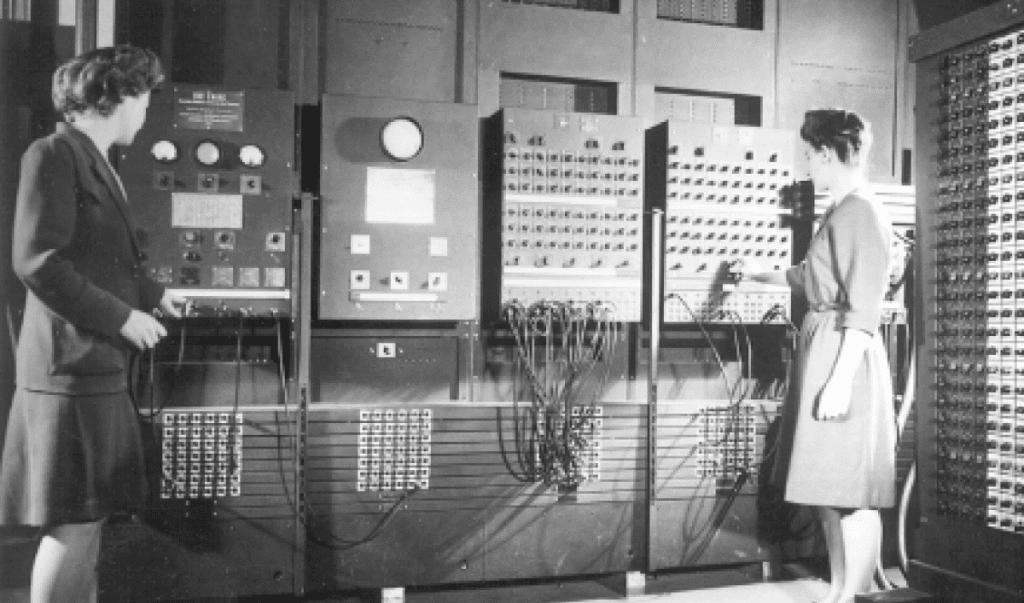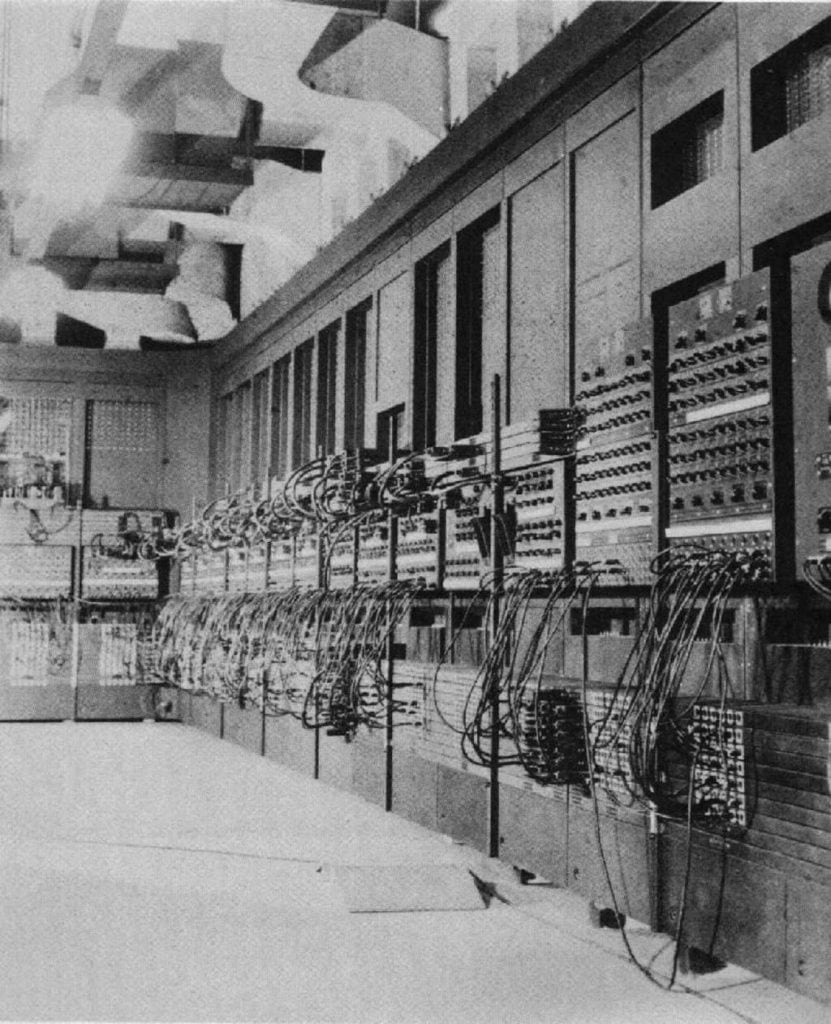Witchdoctor’s tech guru PAT PILCHER writes an ode to the first programmable digital computer on the occasion of its 75th birthday.

On February 15, 1946, ENIAC, the world’s first programmable digital computer, was made public in a press release by the US War Office.
Before ENIAC, computers were often mechanical and were built to do a specific task. What made ENIAC unique was that it could be re-programmed to compute different tasks, making it considerably more versatile than the machines that had gone before it. It was also one of the first computing devices to be fully electronic, which meant that it was faster than earlier mechanical machines.
Would you like to support our mission to bring intelligence, insight and great writing to entertainment journalism? Help to pay for the coffee that keeps our brains working and fingers typing just for you. Witchdoctor, entertainment for grownups. Your one-off (or monthly) $5 or $10 donation will support Witchdoctor.co.nz. and help us keep producing quality content. It’s really easy to donate, just click the ‘Become a supporter’ button below.

Cutting edge tech isn’t cheap, and this was also true of ENIAC. Its original cost estimates were US$150,000 (that’s a cool US$2.14 million in 2021 money). Its costs ballooned out to US$400,000 ($5.72 million in 2021 money, which today is enough to buy you a garden gnome in Auckland).
As for taking ENIAC to a LAN gaming party, forget it. ENIAC weighed in at a whopping 30 tons and filled a 1,800-square-foot (548.64 square metres) room. It consisted of 40 substantial 9-foot-tall metal cabinets. Its innards consisted of 18,000 vacuum tubes, 10,000 capacitors, 6,000 switches and 1,500 relays plus 5 million soldered joints.
A modern-day PC or Mac owner would probably find ENIAC baffling as it was mainly a tangle of patch cords, switches, and dials.

ENIAC was designed by John Mauchly and J. Presper Eckert of the University of Pennsylvania. Both went on to build commercial computer systems and founded one of the companies that were eventually merged to form Unisys.
When ENIAC was finally completed, WWII had ended. ENIAC didn’t power up until November 1945. Keeping it cool required two 20-horsepower blowers to blow cool air into the basement housing ENIAC so that the 147 kilowatts of heat it generated didn’t melt it down. Philadelphia residents used to joke that when ENIAC was switched on, their lights would flicker and dim.

While you could, in effect, park a school bus inside ENIAC, its specifications were at best modest by today’s standards. ENIAC could store 20 10-digit numbers, a mere fraction of what the smartwatch on my wrist is capable of. Its specifications may sound anaemic by today’s standards, but ENIAC was a gamer changer. Its first tasks involved calculating artillery trajectories. ENIAC was programmed using a system of plugboards, switches and punch cards and could calculate an artillery trajectory in a mere 30 seconds. That task had previously taken a human a long and painful 20 hours.
Today we power up our PCs and Macs, taking it for granted that they’ll just work. This wasn’t so with ENIAC, whose reliability was at best problematic. Several of ENIAC’s 18,000 vacuum tubes burned out daily, often leaving ENIAC unable to compute for anything up to half a day while the faulty valve was tracked down and replaced. Engineers eventually reduced ENIAC’s tube failures. This was done by decreasing the voltage supplied to its valves, resulting in a more acceptable failure rate of one tube every two days. In 1954, ENIACs most prolonged operational period without a tube failure was recorded as 116 hours – almost five days. I’ll never complain about the blue screen of death again.

Not long after ENIAC, EDVAC was built. It was an even faster digital computer that could serially process calculations. Inevitably, after 11 years of calculating, ENIAC was retired in 1955. In 1996, to honour ENIAC’s 50th anniversary, the University of Pennsylvania announced a project called “ENIAC-on-a-Chip”. This saw ENIAC recreated using modern components on a silicon wafer that was 7.44 mm by 5.29 mm. The 20 MHz chip ran many times faster than ENIAC, although it was considerably slower than other microprocessors of the late 1990s.









